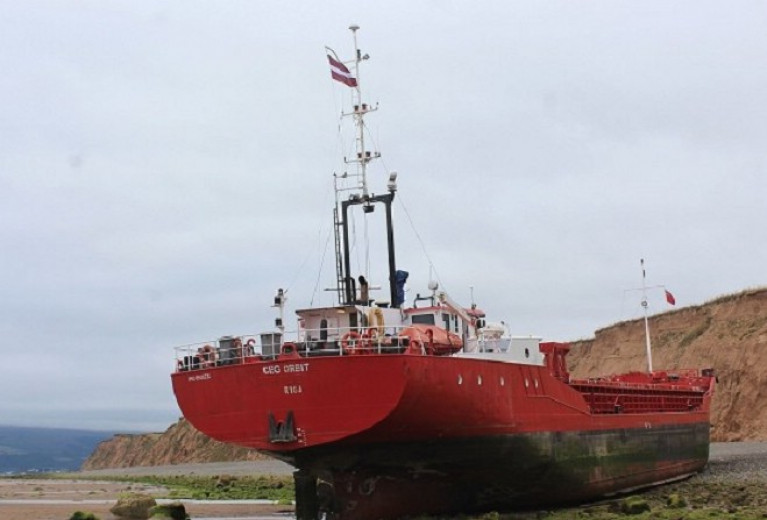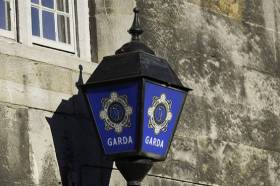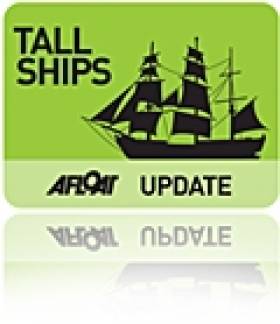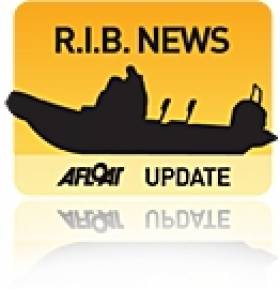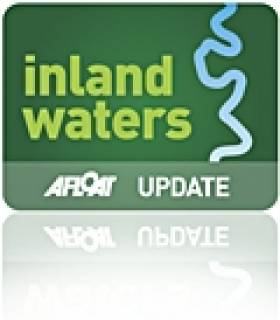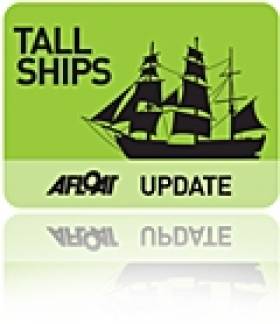Displaying items by tag: investigation
Ferry Firm P&O Pledges Full Investigation after European Causeway Loses Power off Antrim Coast
Ferry operator P&O has said a full investigation will be carried out after a vessel travelling to Larne was left to drift off the coast of Co Antrim after losing power.
The 'European Causeway' - which operates between Larne and Cairnryan - had what the operator described as a "mechanical failure" on a sailing to Northern Ireland on Tuesday afternoon.
Emergency rescue crews from the coastguard and RNLI raced to the scene, however, P&O later said there were no injuries and the Maritime and Coastguard Agency said there were no concerns for safety.
One passenger told UTV the engine just stopped working and then it restarted and continued on for another 10 minutes or so.
"Then it just stopped and it completely blacked out, all the electrics and everything were just down."
A spokesperson for P&O Ferries confirmed that the vessel finished the journey "under its own propulsion".
They said: “Following a temporary mechanical issue, the European Causeway is now continuing on its scheduled journey to the Port of Larne under its own propulsion, with local tugs on standby, where it will discharge its passengers and cargo as planned.
"There are no reported injuries onboard and all the relevant authorities have been informed. Once in dock a full independent investigation will be undertaken.”
ITV News has further coverage of the ferry which docked in the Co. Antrim port.
Isle of Man Registry Confirms Investigation Into Beaching of Cargo Ship
The Isle of Man Ship Registry has confirmed it's carrying out a preliminary investigation into the beaching of a cargo ship at Cranstal.
As Manx Radio reports, the incident took occurred in the early hours of 26 August.
The cargo ship CEG Orbit was successfully re-floated, on the second attempt, at 2am the following day.
Director of the Isle of Man Ship Registry Cameron Mitchell has told Manx Radio the investigation is being carried out on behalf of the Latvian authorities.
That's due to the ship sailing under the Latvian flag.
The CEG Orbit was removed from the beach by two tugs the Wendy Ann, of the Laxey Towing Company, and the CT Vector from Liverpool.
After being refloated the ship made her way to Douglas where she was checked for damage.
The company that runs the Clipper Round The World Yacht Race has called for an independent inquiry into the official investigation of the death of a sailor during the most recent edition of the race.
Clipper Ventures have blasted UK’s Maritime and Coastguard Agency (MCA) and Marine Accident Investigation Branch (MAIB) for “failure of professionalism, impartiality and honesty” in their parallel probes of the overboard incident in the Southern Ocean that cost the life of 60-year-old retired solicitor Simon Speirs on 18 November 2017.
Despite his being tethered to the boat, as Clipper Ventures says, a “freak failure” of a tether safety clip led to Speirs entering the water as he was helping to reduce sail on board the yacht CV30, also known as GREAT Britain, amid increasing winds and sea state.
Spears was recovered from the sea by his fellow crew but could not be resuscitated. He was given a burial at sea the following day.
Clipper Ventures says the conclusions of investigations by the MCA and MAIB into the incident “are the cause of considerable concern” and involve “multiple errors and distortions of the truth” — including a suggestion by an MCA official that a nearby vessel could have taken Speirs’ body home to the UK for burial, when no such vessel existed.
Clipper Ventures also says it suspects that “significant and improper influence was applied to the MAIB investigation by the MCA team” in the bodies’ parallel investigations.
As of 1pm on Sunday 11 August, the MCA and MAIB have not released comment on Clipper Venture’s claims.
Investigation Into Human Remains Found By Fishing Vessel Off Cork Coast
Gardaí in Cork have launched an investigation after human remains were recovered by the crew of a fishing vessel 180 nautical miles off Castletownbere in Co Cork at the weekend.
TheJournal.ie reports that the vessel docked in Castletownbere on Sunday evening (20 January) and the remains were transferred to Cork University Hospital where a post-mortem was performed yesterday (Tuesday 22 January).
Astrid Repairs Unlikely As Experts Discuss Salvage Plans
#Astrid - The Irish Times reports that marine salvage experts met on Friday with insurers of the Dutch tall ship Astrid to determine a wreck removal plan for the sunken vessel.
The sail training ship, which was taking part in The Gathering Cruise around Ireland, capsized after hitting rocks inside the Sovereign Islands near Kinsale in Co Cork on the afternoon of Wednesday 24 July.
All 30 crew on board - including a number of teenage sail trainees - were brought to safety by RNLI lifeboats from Kinsale and Courtmacsherry in a major rescue operation.
As previously reported on Afloat.ie, investigations got under way last Thursday 25 July to determine what caused the 42-metre brig to run aground at the mouth of Oysterhaven harbour.
Despite strong winds and rough seas at the time of her foundering, the Astrid remains largely intact apart from rips along the hull.
And according to expert salvage diver Colm Harrington, the 95-year-old ship will be salvageable - using slings to lift the vessel from the water.
However, the severity of the damage sustained means that it's unlikely the Astrid will be restored to her former glory.
The Irish Times has much more on the story HERE.
Police Focus On Kill Cord In Cornwall RIB Tragedy
#KillCord - Police in Cornwall investigating the deaths of a father and daughter in a speedboat accident off Padstow at the weekend are focusing on the boat's 'kill cord', according to BBC News.
BSkyB executive Nick Milligan and his eight-year-old daughter were struck by the family's runaway Cobra RIB after losing control of the vessel and being thrown overboard.
Four other family members in the water struck by the 8m-long boat were hospitalised, with the BBC reporting that Milligan's wife Victoria and four-year-old son Kit suffered "serious, potentially life-changing injuries".
Witnesses describe the speedboat circling to hit the family after turning sharply and throwing them into the water, then continuing to run around in circles before it was stopped by local waterskiing instructor Charlie Toogood who jumped on board.
Investigators are looking closely at the kill cord or safety lanyard, a device attached to a boat's throttle that should automatically cut engine power if the boat's pilot goes overboard.
A malfunctioning kill cord was identified in an incident in Cork Harbour last summer in which a RIB pilot lost an arm after he was thrown overboard and subsequently struck by his runaway vessel, as previously reported on Afloat.ie.
Months before, an angler died and another was treated for hypothermia after being thrown overboard and separated from their vessel, a result of neither man using the kill cord on their boat's engine.
NI Officials Investigate Fish Kill in Newtownabbey
#INLAND WATERWAYS - Officials at the Northern Ireland Environment Agency (NIEA) are attempting to find the source of a pollutant that resulted in a fish kill on the Threemilewater river in recent weeks.
The Newtownabbey Times reports that more than 120 trout and salmon parr have been found dead on the short stretch of river between Mossley Mill and Doagh Road in Newtownabbey, Co Antrim.
John Webster of the Threemilewater Conservation and Angling Association speculated that the pollutant may have entered the water from any of a number of pipes that flow into the waterway near the railway line at Mossley Mill.
He described the fish kill as "an absolute diasaster", especially coming as it did at the opening of the fishing season on 1 March.
The Newtownabbey Times has more on the story HERE.
Safety of World's Tall Ships In Question
Safety on the world's 700 sail training tall ships has been called into doubt, Sail World reports.
The concern comes following an investigation into the sinking of Canadian tall ship Concordia off the coast of Brazil last year.
The ship capsized in a squall on 17 February 2010. All 64 passengers and crew spent two days adrift in lifeboats before being rescued.
Investigators from the Transportation Safety Board of Canada concluded last week that no action was taken to prevent capsizing, such as reducing sail or changing course, because the officer-in-charge did not realise the ship was in danger.
The board also learned that the officer-in-charge was able to get his certification without having to familiarise himself with information on the handling and stability of the ship, and found that this lack of a requirement is universal across the world's sail training vessels.
Senior investigator Paulo Ekkebus said this was "a large concern" and called for stricter standards worldwide.
He added: "We’ve not been able to find any country, any flag-state, requiring the study, or for people that they are familiar with this type of information, if it is provided on board the ship."
Sail World has much more on the story HERE.
While it might be an exaggeration to say that all of the 21 crew members of Rambler 100 owe their lives to the Irish Search and Rescue service, there are certainly five people whose future prospects were greatly improved by the operation off the Fastnet Rock on August 15th. A lot of media focus has been on Coxswain Kieran Cotter and the crew of Baltimore Lifeboat as well as lifeboat mechanic Jerry Smith, whose dive boat, on charter to the media team of one of the competitors, was on hand to search and recover the five drifting crew. There is no question that this focus is appropriate. RNLI crews all over the UK and Ireland deserve the attention, not only because of their extraordinary voluntary dedication to the cause, but also because such publicity helps swell the coffers of the charity. The service could not operate without the generosity of the donors and incidents such as these help fill the blue boat-shaped boxes held by even more RNLI volunteers.

Saved: Ireland's Rescue Services Answered the Call of the capsized Supermaxi Rambler 100 off the Fastnet Rock. Photo: Team Phaedo
The dramatic stories and pictures dominating the media show the front line of a quite wonderful resource that is Search and Rescue in Ireland today. Baltimore Lifeboat was at the coal face of an intricate network of operations, triggered by the crew's EPIRBs. Irish Coast Guard radio officers in Valentia responded almost immediately tasking the rescue resources, working the phones and computers to confirm that this was not an accidentally triggered EPIRB, contacting RORC HQ, determining search patterns and relaying the information to the scene. It was the backroom contacts between RORC and the Coast Guard in endeavouring to contact Rambler 100 using satellite phones that confirmed the possibility of a catastrophic incident involving the Supermaxi. The subsequent tasking of the Shannon and Waterford based Sikorsky helicopters led to the medevac of crew member Wendy Touton and timely treatment of her hypothermic condition, initially by the on-board paramedics and later at Tralee General hospital. And Coast Guard involvement didn't end with the successful rescue – the shoreside operation to provide food and shelter in Baltimore was coordinated by Coast Guard personnel and the salvage operation of the hull of Rambler 100 was overseen by the Irish Coast Guard.

Rambler crew are recovered from the water after a SAR operation by the Irish Coastguard Photo: Team Phaedo. More photos here.
That Ireland has probably one of the best Search and Rescue services in the world goes back to the campaign initiated in 1988 by Joan McGinley, following the death, within sight of land of Donegal fisherman John Oglesby, whose leg was severed in a trawl winch. Eamon Doherty, the late former Garda Commissioner chaired the review group established in response to the campaign and his report led to the establishment of the Irish Marine Emergency Service, subsequently the Irish Coast Guard. Under the guidance of Director Capt Liam Kirwan, the new service moved quickly to become not only the central co-ordinating body for Search and Rescue, but developed its own resources, notably the helicopters, previously tasked in from Irish Air Corps and UK SAR.
Another element that will feature in the Rambler 100 incident is the Marine Casualty Investigation Board (MCIB), set up from recommendations arising from a review of the handling of investigations into marine casualties.
It might be thought that the incident is now closed, but there are many unanswered questions and the investigation will be looking at these and making recommendations that should improve safety in this sector. These questions will include EPIRB performance, liferaft deployment and grab bag usage, but perhaps the key issue yet to be determined is why the response from fellow competitors didn't appear to happen. Even if Channel 16 wasn't being actively monitored, and if not why not, shouldn't the Mayday set off by the Coast Guard have set off the DSC alerts on the radios of Rambler 100's fellow competitors? Had the incident occurred several hours later or earlier when Rambler 100 could have been up to 100 miles from the nearest land, when conditions worsened, we could be looking at much more serious consequences.
It is heartening to think that, in this small country of ours in troubled times, not only do we have a shining star in our search, rescue, recovery and restore system, involving professionals and volunteers cooperating for the greater good, we also have a system that determines the nature of incidents so that we can all learn from the experience.
And let us not forget those people and services, such as the Gardai, Navy, Army and the community of Baltimore who are outside the media spotlight who contributed to this happy ending.
Afloat's Latest Coastguard News
Afloat's Latest RNLI Lifeboat News
Afloat's Latest MCIB News
Report Into Loss of Janireh Crewman Now Online
The full report of the investigation into the loss of a crewman from the fishing vessel Janireh earlier this year is now available online.
Egyptian national Nadi Sehsaah died after falling overboard from the trawler some 20 nautical miles south west of Mizen Head. It is believed he was not wearing a flotation device at the time of the accident.
The Marine Casualty Investigation Board (MCIB) has said there is an onus on the fishing industry to improve safety standards across the board, according to the Irish Examiner - which has more on the story HERE.
The MCIB report is available to download HERE.



























